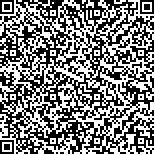下载中心
优秀审稿专家
优秀论文
相关链接
摘要

城市黑臭水体整治是城市水环境治理的一项重要工作。本文通过构建黑臭水体遥感识别模型,解决城市黑臭水体整治过程中黑臭水体的识别问题,实现城市黑臭水体空间分布快速定位与排查。通过分析黑臭水体形成机理和试验数据,从光谱特征上构建反映水体清洁程度的光谱指数(WCI),从图像特征上构建水体颜色、次生环境、河道淤塞、岸边带垃圾堆放等解译标志,综合光谱指数和解译标志共同进行黑臭水体遥感识别。利用该方法对太原市建成区内黑臭水体空间分布进行排查识别,共得到疑似黑臭河段14条,长度为52.530 km。经验证,除去断流影响外,遥感识别黑臭水体点位精度为92.86%,遥感识别黑臭河段长度精度为78.19%。在精度验证基础之上,进一步分析了黑臭水体遥感识别光谱指数和各项解译标志在黑臭识别中所占的权重,其中光谱指数和水体颜色二者权重最大,分别占29.60%和27.10%,是构成遥感识别黑臭水体的主要特征标志。通过两时相影像识别结果比对表明,WCI指数能够明显反应黑臭水体变化特征。因此,利用本文方法进行城市黑臭水体遥感识别具有很高的精度,在城市水环境整治过程中具有重要的应用价值。
Treatment of urban black and odorous water is important in the control of urban water environment. A remote sensing recognition model of black and odorous water bodies was constructed in this study to identify the affected water bodies for treatment, determine their location, and investigate their space distribution.
On the basis of the analysis of formation mechanism of black and odorous water and test data, we constructed a spectrum index called water cleanliness index (WCI) from spectrum characteristics to reflect water cleanliness. We also established interpretation signs from image characteristics, such as water color, secondary environment, river silting, and riparian garbage stacking. Combination of the spectral index and interpretation signs could be used to identify black and odorous water bodies.
The proposed method was used to identify the space distribution of black and odorous water bodies in the built-up area of Taiyuan. A total of 14 black and odorous river sections with a length of 52.530 km were obtained. The point accuracy of remote sensing identification of black and odorous water bodies was 92.86%, and the river accuracy of remote sensing identification of black and odorous water bodies was 78.19% without the effects of dried-up rivers.
The weights of the spectral index and interpretation signs in the remote sensing identification of black and odorous water bodies were analyzed on the basis of the results of black and odorous river sections. The spectral index and water color had the largest weights among them with 29.60% and 27.10%, respectively. Both of them constituted the main characteristics of remote sensing identification of black and odorous water bodies. Comparison of the results of the two-phase remote sensing image recognition showed that WCI could significantly reflect the change characteristics of black and odorous water bodies. Therefore, this method has high precision in recognizing urban black and odorous water bodies by remote sensing and can be applied in the control of urban water environment.

